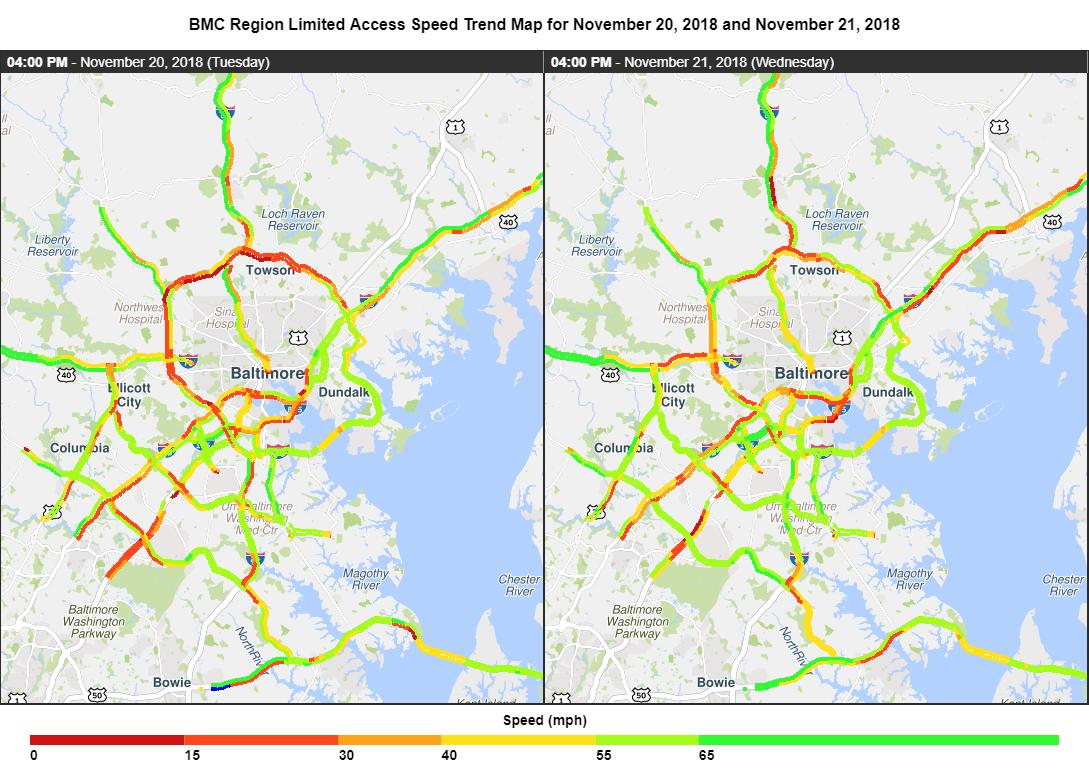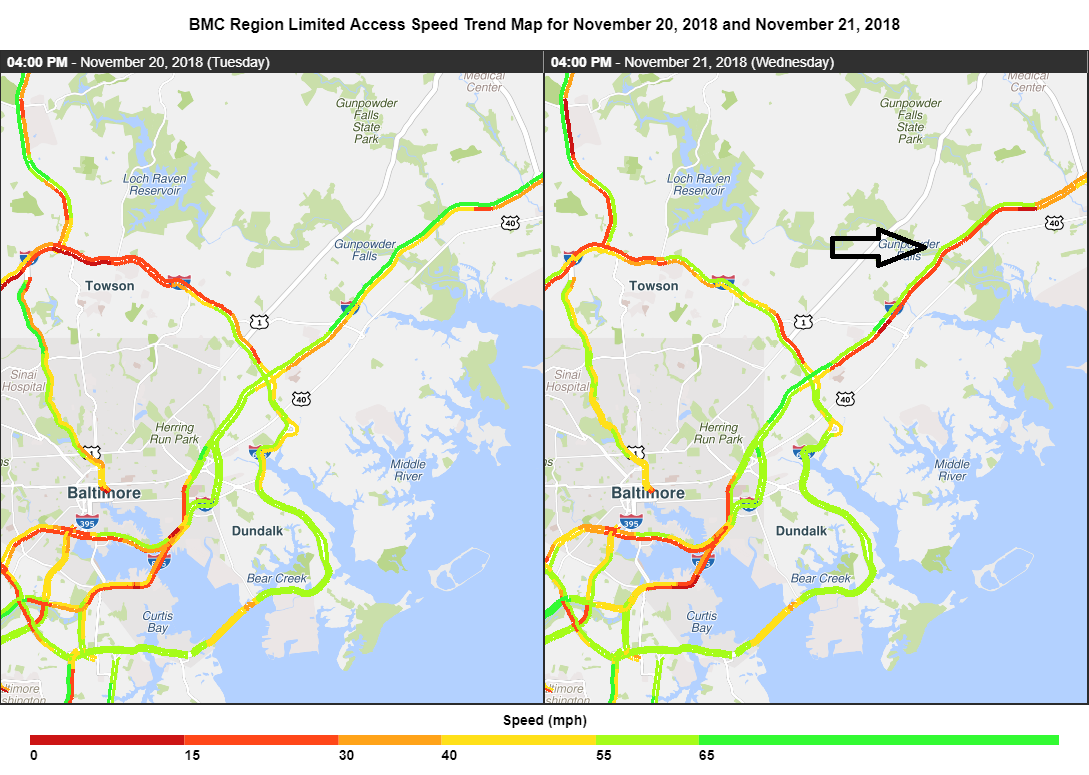
With the Thanksgiving holiday quickly approaching, many Marylanders will hit the roads to be with their families. Holiday travel is stressful enough without the annoyance of bumper-to-bumper traffic and hours of delays. Instead of going with the flow, here are some tips on how to make your travel a little bit easier this week.
The Maryland Transportation Authority (MdTA) estimates that more than 3.4 million travelers will drive on its highways, bridges and tunnels this Thanksgiving. This estimate forecasts a slight increase in travel from last year’s Thanksgiving holiday traffic.
In previous years, the Wednesday before Thanksgiving was considered the busiest travel day of the year. Although Wednesday, November 27, is expected to be the heaviest travel day, data shows that families trying to beat the rush have increased traffic on the Tuesday before Thanksgiving as well.
Using crowdsourced vehicle probe data, we have determined that peak travel occurs in the 4 o’clock hour on both the Tuesday and Wednesday of Thanksgiving week, making this one of the worst times to travel. Speed maps from Tuesday and Wednesday of Thanksgiving week 2018 show where traffic problems occurred.
 |
By looking at the data from last year, those who had been thinking of leaving a day early on Tuesday to get a jump on traffic may have been surprised, as traffic was very heavy throughout the region. However, as you can see in the map below, I-95 northbound appeared significantly slower on Wednesday north of the beltway approaching Harford County at the peak travel hour. The Baltimore Beltway was showing heavier traffic on Tuesday last year primarily due to crashes.
 |
The following animated maps show speeds on the major highways of the Baltimore Region on the Tuesday and Wednesday before Thanksgiving in 2018. Just press play to see a 24-hour time-lapse animation of both days side by side. Pan around and zoom in or out to take see what conditions on your family’s route to Thanksgiving dinner may look like this year.
Travel advisories:
As for the best times to travel, our partners at the Maryland Transportation Authority (MdTA) offer these travel tips for the Thanksgiving Day holiday:
Bay Bridge:
The deck surface of the Bay Bridge right lane has reached the end of its service life and is severely deteriorated. To expedite the rehabilitation project, crews are working day and night, seven days a week, and will continue during Thanksgiving week. This will save significant time because crews not only gain the work week, but didn’t have to stop work in advance of the holiday to prepare the right lane for traffic. That process would have involved removing jersey barriers and restriping lanes.
Motorists should expect major delays in both directions and plan to leave an extra 20 to 30 minutes early if crossing the bridge. Recommended times to travel the Bay Bridge during the Thanksgiving holiday are:
Eastbound:
- Tuesday through Friday, November 26-29, before 9 a.m. and after 9 p.m.
- Monday, December 2, before noon and after 8 p.m.
Westbound:
- Tuesday and Wednesday, November 26-27, before 5 a.m. and after 6 p.m.
- Thursday through Sunday, November 28-December 1, before 9 a.m. and after 9 p.m.
- Monday, December 2, before 5 a.m. and after 2 p.m.
I-95 Corridor
MdTA is reminding motorists using I-95 to travel these off-peak hours:
- Tuesday and Wednesday, November 26-27, before 6 a.m. and after 11 p.m.
- Thursday and Friday, November 28-29, before 7 a.m. and after 9 p.m.
- Saturday and Sunday, November 29-30, before 9 a.m. and after 9 p.m.
The Baltimore Metropolitan Council (BMC)’s congestion management process analyzes where and when traffic in the Baltimore region tends to pile up and for how long it will stay congested by looking at data from various crowdsourced probe data sources. According to the Maryland Transportation Authority (MdTA) who manage the region’s toll facilities, travelers should consider departing during off-peak hours to avoid significant delays along the I-95 corridor.
*All graphics and animations are generated in cooperation with the I-95 Corridor Coalition, Probe Data Analytics Project and the University of Maryland Center for Advanced Transportation Technologies (CATT) Lab. Vehicle probe data provided by INRIX. Advisories provided by the Maryland Transportation Authority (MdTA)
